 They say true love lasts forever. But why can't it be brief? Like, a few hours? A few intense, very steamy hours? 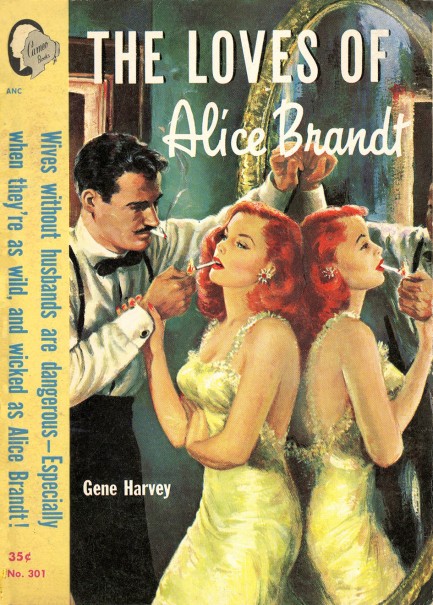
You're not seeing double. This cover for Gene Harvey's The Loves of Alice Brandt is almost identical as the Howell Dodd art from Luther Gordon's Free and Easy, which we showed you recently. This novel, published in 1951, is aka Office Hussy, 1957, by John Hunter. Both Hunter and Harvey were pseudonyms of Jack Hanley. The art is unattributed, but it isn't by Dodd unless he was in a rush. Everything is a bit less detailed, a bit less dimensional—the hair, the dress, the background. But as a brazen copy of Dodd, you have to admire the mystery painter's bolas. You see the original art below.
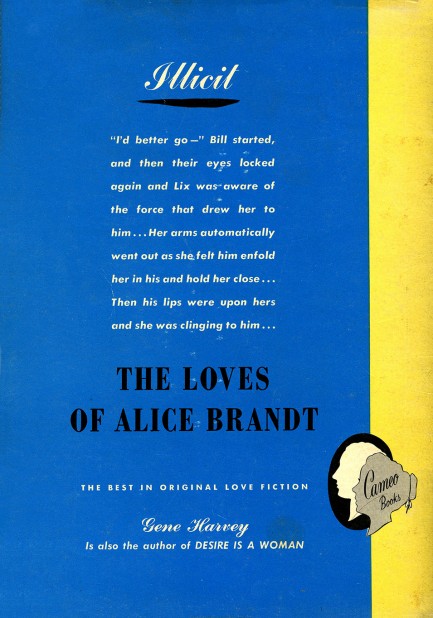 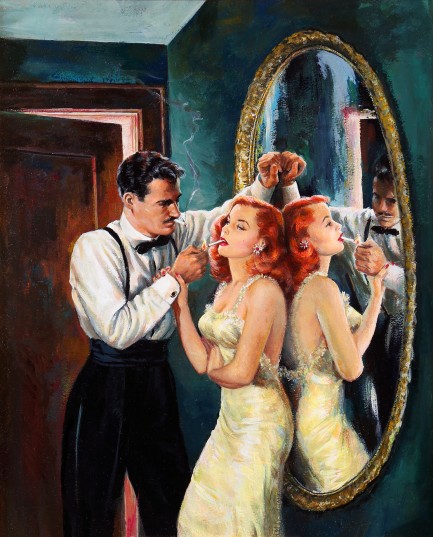
 There's been entirely too much downsizing around here. How about today you and I do a little upsizing? 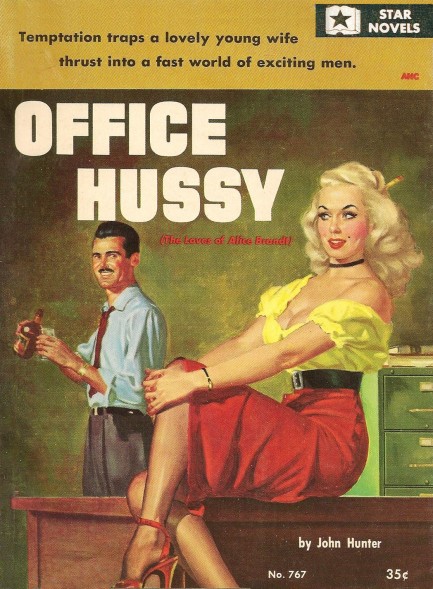
When does a growth spurt occur in a typical business? In mid-century sleaze fiction, it happens whenever secretary and boss agree, as suggested in this brilliant cover by George Gross for John Hunter's 1957 novel Office Hussy, previously published in 1951 as The Loves of Alice Brandt and credited to Gene Harvey. We like to interpret this as the woman being the boss, having just told her subordinate to pour a couple of tall bourbons, and be damned quick about it. But it can be seen the other way if you wish. Doesn't matter, because when consenting parties get together everybody gets a bonus. You already know George Gross was close to the best paperback artist ever, but if you're unfamiliar with him, check here, here, and here.
 Okay, he's taken the bait. We'll let him get close, then you distract him by puking on his coat, and I'll take him down. 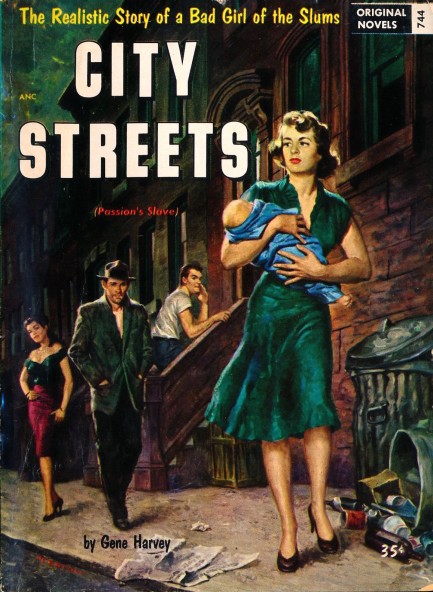
City Streets was written by Gene Harvey, aka Jack Hanley, who we last saw authoring 1942's Leg Artist. Harvey was a literary vet who authored such memorable lite-sleaze epics as She Couldn't Be Good, A Girl Called Joy, and Stag Stripper. City Streets is from 1954 and apparently his various publishers liked it so much they issued it four times—Venus Books put it out in 1950 as Cutie, Exotic Novels released it as Passion's Slave the same year in an illustrated format, Original Novels published it as what you see above, and finally Star Novels published it, also as City Streets, in 1955. These companies were closely related, but that's still a lot of mileage from one book. It explores the trials and tribulations of beautiful young Dru, “a bad girl of the slums,” who's gotten her education from the school of hard knocks—i.e. from Chicago's south side. The cover art on this is by Rafael DeSoto, who cleverly hid his signature in the gutter. It's a really beautiful effort from him, certainly one of his best. We've featured him often, so just click his keywords below if you want to see more.
 That's great. Very sexy. Now why don't we—just for context, you understand—see where the legs actually attach. 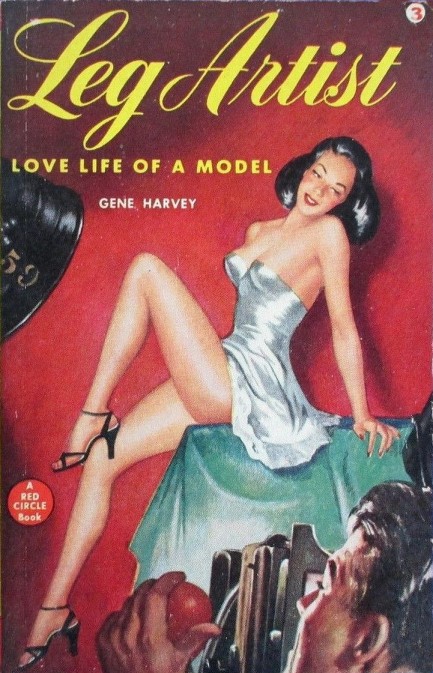
Originally published in hardback in 1942, with this Red Circle paperback appearing in 1949, Leg Artist is the story of a model named Lee Martin who rises to the top of her profession only to be targeted by a con man and felled by the tabloid press. The title refers to the photographic arts but is also a double entendre, as a “leg artist” is mid-century slang for a man adept at picking up women. Harvey revisited this theme later with 1950's Leg-Art Virgin. Red Circle was part of a publishing group put together by U.S. publisher Martin Goodman, and some of these companies evolved into Timely Comics, which in turn morphed into Marvel Comics. The art for this cover is by unknown.
|
 |

The headlines that mattered yesteryear.
2003—Hope Dies
Film legend Bob Hope dies of pneumonia two months after celebrating his 100th birthday. 1945—Churchill Given the Sack
In spite of admiring Winston Churchill as a great wartime leader, Britons elect
Clement Attlee the nation's new prime minister in a sweeping victory for the Labour Party over the Conservatives. 1952—Evita Peron Dies
Eva Duarte de Peron, aka Evita, wife of the president of the Argentine Republic, dies from cancer at age 33. Evita had brought the working classes into a position of political power never witnessed before, but was hated by the nation's powerful military class. She is lain to rest in Milan, Italy in a secret grave under a nun's name, but is eventually returned to Argentina for reburial beside her husband in 1974. 1943—Mussolini Calls It Quits
Italian dictator Benito Mussolini steps down as head of the armed forces and the government. It soon becomes clear that Il Duce did not relinquish power voluntarily, but was forced to resign after former Fascist colleagues turned against him. He is later installed by Germany as leader of the Italian Social Republic in the north of the country, but is killed by partisans in 1945.
|

|
|

It's easy. We have an uploader that makes it a snap. Use it to submit your art, text, header, and subhead. Your post can be funny, serious, or anything in between, as long as it's vintage pulp. You'll get a byline and experience the fleeting pride of free authorship. We'll edit your post for typos, but the rest is up to you. Click here to give us your best shot.

|
|














































































